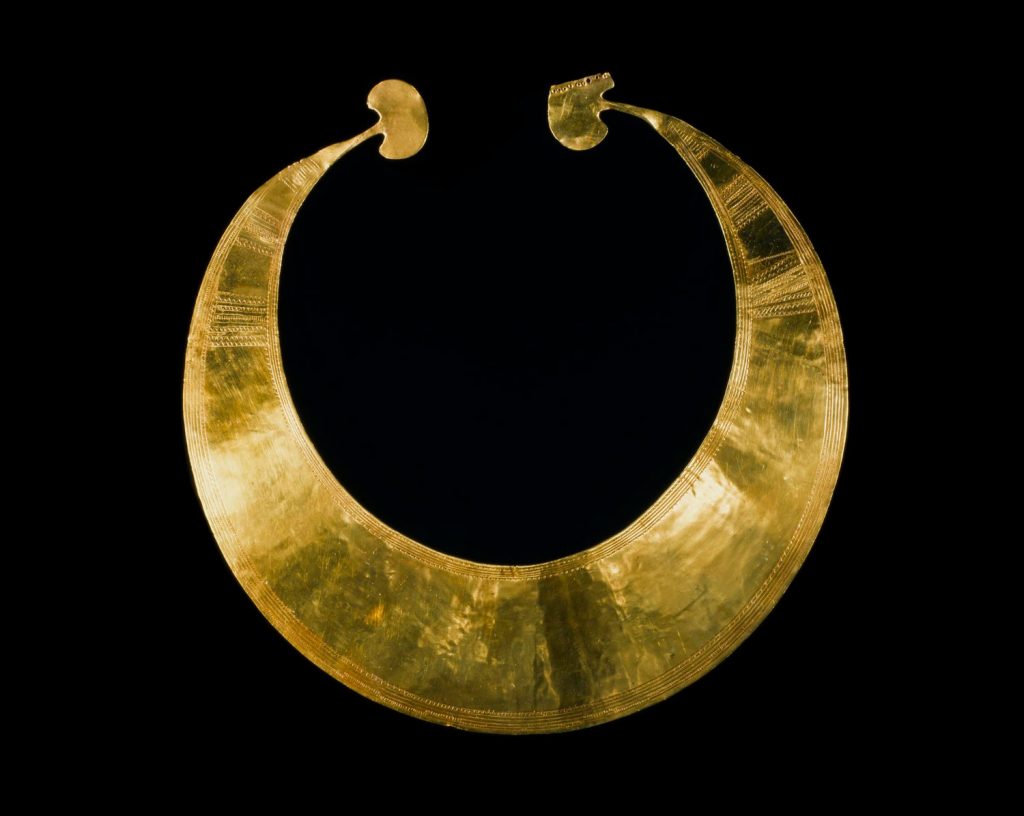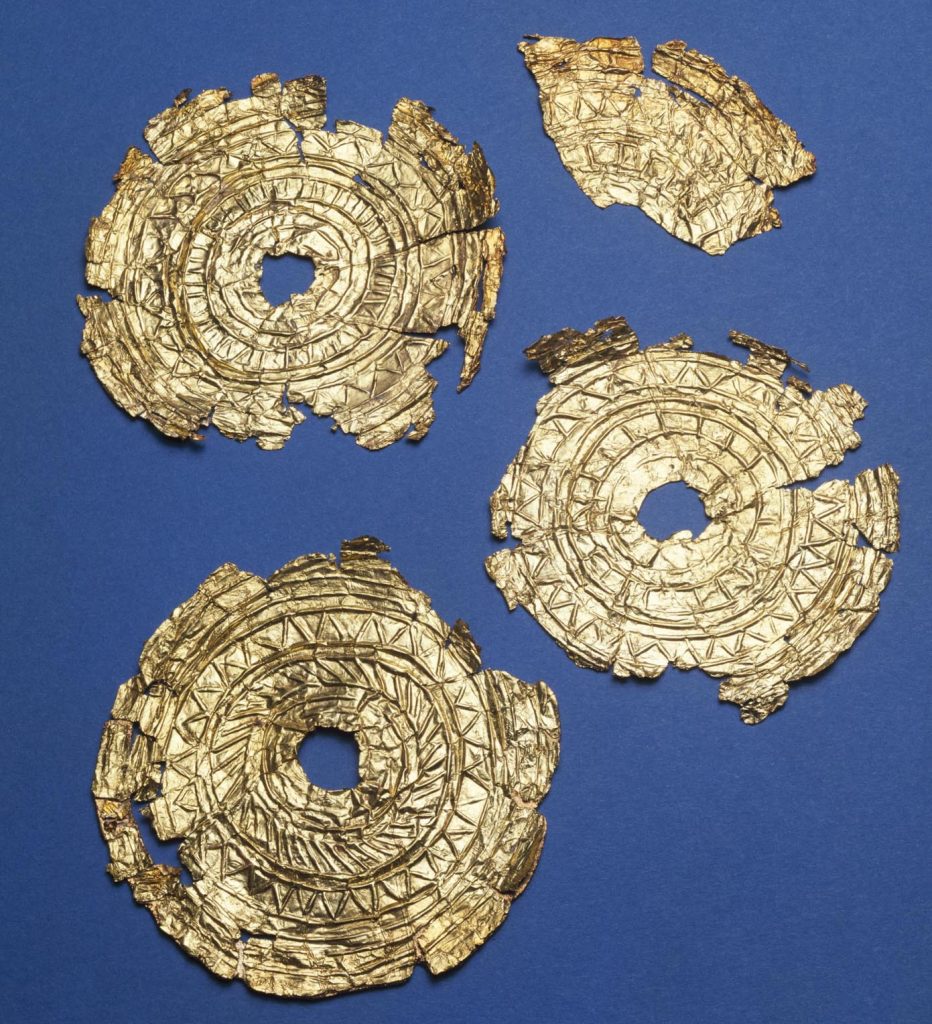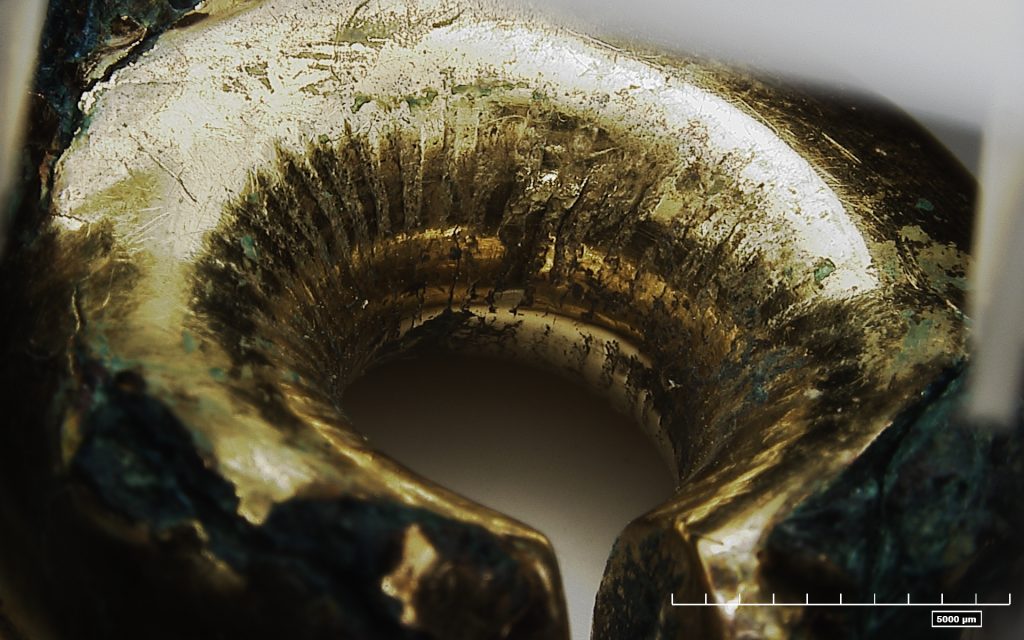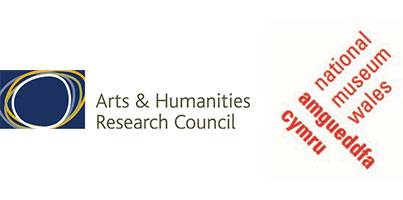Gold has always fascinated people. Its unique natural properties, including its flexible character and brilliantly shiny appearance, means that it has been valued and utilised across the world for thousands of years.
In Britain and Ireland, the first use of gold objects occurred four and a half thousand years ago during the Chalcolithic period (Copper Age). The earliest objects were small pieces of sheet gold such as basket-shaped hair ornaments and so-called ‘sun discs’ and were produced from around 2450 BC. Gold-working developed and diversified throughout the Chalcolithic and Bronze Age periods (2450–800 BC), with larger and more elaborate objects being made, including lunulae, bracelets and neckrings, as well as one-of-a-kind items, such the gold cape found at Mold in north Wales.

This prehistoric period represents the start of a fascinating interaction with a unique material, which still has a huge impact on modern lives – to this day we still wear gold jewellery! Gold allowed people to express ideologies in a new and special way, and encouraged them to acquire and explore new skills. It took many forms and was buried with people in graves as well as in hoards.

But there is much we still don’t know.
For instance, where did the gold originate? Exactly how, where and why were these objects made? How were gold-working skills developed and transmitted over time? And what meaning and significance did gold have for the people who worked and used it?
On 1 May 2018, a new international interdisciplinary project was launched to tackle some of these questions, entitled: Gold in Britain’s Auriferous Regions 2450–800BC: Towards a Coherent Research Framework and Strategy.

This project was funded by the Arts and Humanities Research Council and was led by Dr Alison Sheridan of National Museums Scotland and Dr Jana Horak of Amgueddfa Cymru – National Museums Wales. During the project, expert geologists, geochemists, archaeometallurgists, archaeologists and practising goldworkers worked together in a Research Network to define what we know and (more importantly!) what we don’t know about gold during the Chalcolithic and Bronze Age… and working out how we can best address the outstanding questions.
To do this, we studied the areas of Britain where gold can be found naturally. This encompasses Scotland, Wales, and north-western and south-western England. These areas provide some of the best opportunities for exploring links between the sources of gold and the objects that were made, as well as investigating non-local uses of gold.
The aim of the project was to produce an on-line Research Framework and Strategy, and to that end three research symposia were held for the Research Network in Edinburgh, Cardiff and Dublin between September 2018 and July 2019. There were public lectures associated with the Edinburgh and Cardiff symposia, and a practical demonstration of Bronze Age-style goldworking in Dublin. We also shared the latest research and lots of information on important objects from our study area ― especially those within the collections of National Museums Scotland and Amgueddfa Cymru – National Museums Wales.
To keep up to date with the project as it develops, follow #prehistoricgold on Twitter, Facebook and Instagram.

